Hey all, welcome to my guide on pricing online courses.
Pricing my first course was a NIGHTMARE. I screwed it up completely. I made a few sales and didn’t have much to show for it at all.
Thankfully, after a few years, I’ve learned a thing or two that I wish I’d known BEFORE I started. If I’d known these secrets from the beginning, I’d have doubled or even tripled the sales numbers I currently have.
This mega-guide will walk you through everything you need to know about setting a price for your course that makes you a comfortable living. This is the type of stuff you don’t normally learn until 2 or more years into the business, so pay attention.
We’ll cover:
- What to do and what NOT to do
- Some secrets I’ve learned from being in the course business
- Key lessons I’ve learned along the way about pricing and making as much money as possible
- A fun story about course pricing
- My exact process for figuring out the proper price for your course and how to continually raise prices
Excited? Let’s get into it!
Online Course Pricing Guide: Key Takeaways
Since this guide is a behemoth containing everything I’ve learned about online course pricing, let me sum up everything for your first online course in some quick bullet points.
How to Price Your Online Course:
- Start With Your Ideal Customer: Who are they? What are you offering them? How much would that be worth to them? Think about the value you’re providing, NOT the information.
- Do General Research: Scan the market and see what others are charging. Check all the major platforms, then check for independent creators, communities, and other related products.
- Determine Where You Fit in: Do you have more testimonials? Do you have a bigger platform? Do you offer more or less value? Determine your position compared to competitors and start from there.
- Increase The Price by 50%: Once you find your ballpark price, increase it by 50%. Just do it.
- Offer Free Access to a Small Group of Beta Testers: Find ideal customers and give them free access. If they’ve got a large platform already, even better. Get feedback and ask them how much value they see in the course.
- Launch at a Discount: Launch your course at a 50% discount for a limited time. Use this next wave for testimonials and more feedback (and bank the cash).
- Raise Prices: The price of poker is going up. Bring the course back to the original, higher price.
- Keep Raising Prices Gradually: Keep adding to your course and warning new customers that prices are going up soon.
Online Course Pricing DO’S
DO:
- Automatically assume customers will pay much more than you think they will
- Understand that platform, visibility, and social clout in your industry contribute just as much to your perceived value as your course materials
- Test different price points and payment options to see what works best. For example, offer a payment plan or down payment plus installments to increase your conversion rate
- Constantly ask for feedback from students and network connections
- To justify a higher price, offer high-value products to your students like community, group, or personal consultations
- Offer payment plans or test out subscriptions
- Heavily consider the value of the transformation you offer students rather than just the value of the information in the course
Course Pricing DON'TS
DO NOT:
- Base your price on course length or production value
- Charge less than $100 for your online course (unless it’s a mini-course)
- Undersell yourself in any way
- Factor in the work you put into your course (students don’t care)
- Focus too much on “sales goals” when choosing a price
- Forget to add in upsells
Online Course Pricing Cheat Sheet
Here’s my online course pricing calculator cheat sheet. Use it as a basic guide, not as a gospel.
- A Free Course: Create a free online course as a stepping stone to a larger one or as a way to promote services like consulting. Free courses are also a good bonus to throw in with other products.
- Mini-Course: Miniature courses are a solid way to bring in cash and raise your profile, but I advise you to stay away. You could get a massive return on a flagship course with not much more effort. These can go for anywhere from $10 to $50 in my experience.
- Introductory Courses: These are shorter “101”-type courses meant for beginners and should be priced accordingly. Anywhere from $50 to $150 is fine in my book.
- Flagship Courses: These are your main masterclasses that teach a valuable skill in depth. These range anywhere between $300 to $1,000.
- Life-Changing Communities: These are “DropShip Lifestyle”-type courses or “Amazon FBA Mastery” courses. You not only get knowledge, but also coaching, a community, certain business guarantees, and possibly even in-person events. These are anywhere from $3,000 to $10,000.
How to Use This Course Pricing Guide

You have two choices: do it the hard way and mess up, OR learn from my mistakes and follow my advice.
I’ve made a few courses (and know enough people charging a premium price for their courses), so I’ve got a good grasp on the best way to get things done.
My advice is to read this guide in full for a basic overview of what needs to be done, keep it open as you do your research, and refer back to it throughout your pricing journey.
There is no theory or speculation in this guide. There are only cold hard facts based on my personal experience selling courses.
Enjoy…
The Problem With Online Course Pricing
This was me trying to figure out the price for my course.
“I’m going to charge a TON of money and get rich” …
Wait, no. I don’t have any clout yet. I need to grow into that first, so …
“I’m going to charge about $100, so it’ll be an impulse buy”.
S***. Now nobody respects my work. I should raise prices.
“$500. I’m going to charge $500. That’s it. I am now officially the proud proprietor of a $500 online course”.
*Crickets* … No sales.
“OK, F*** THIS!!!!”
Figuring out what to charge for online courses is a b****. Everyone struggles with it the first time around. Firstly, generally speaking, the industry is a mess.
It’s mostly cheap Udemy courses or $10,000 flagship courses with an online community and membership program. It’s really hard to find out where you fit in when the spectrum is so wide.
How to Price Your Online Course: Factors to Consider

There is no one way to skin this cat. The right price for your course depends on so many factors. For example:
- Who your students are and how much money they have
- How your students perceive their problem
- Is it a business course that empowers them to make money or is it a personal skill like playing the guitar or cooking? People tend to pay more for skills that will make them more money compared to “enriching” their lives
- Your marketing
- Your pricing model (i.e., monthly subscription, one-time payment, etc.)
- The transformation you’ll offer
- Added value like a community
Your course might be worth $10. It might be worth $10,000. I have 0 clue – I’m not in your head (but I’m working on a ChatGPT plugin that will be).
There are a million and one business models, payment plans, and premium prices you could charge for your course.
The only way to figure it out is to do what all smart people on the internet do: dive in, make an educated guess, start small, test, and grow from there.
This guide is going to teach you everything I’ve learned about course pricing through trial and error. You’re going to learn how to research the market, find a good starting point, get feedback, and grow. That’s the best way to do it.
Moving along …
Quick Story: A Very Valuable Lesson in Course Pricing (DO NOT SKIP!!!)

My journey in making SEO courses is a bit long and complex. Estonia, Vietnam, Thailand, running a company in Ho Chi Minh City, then selling it and moving… yeah, we don’t have time for all that.
I do have a friend who made the best web copywriting course of all time and learned his lesson the hard way. And his life isn’t nearly as exciting as mine, so let me just tell you about him instead.
Long story short, the course is on how to write great copy for the SEO industry.
He decided to start selling it for $197. Sales were OK, but after launch discounts, platform fees, marketing expenses, and taxes, he was left with about enough for a matcha espresso fusion at Starbucks after each sale.
Here’s the funny part, though.
The course is about 60 videos and full of really great advice, case studies, and testimonials from some pretty well-known people. And it’s all backed by real data.
So, a lot of the people who’d heard great things were floored when they saw the course was only $197 AND on sale for 40% off. In their minds, they were getting “the #1 web copywriting course ever,” but the price was about $100. It wasn’t adding up.
So, he raised his online course pricing to $297. Conversions stayed the same.
Then, at a conference, he met a pretty famous guy in the online marketing world who asked him “Are you comfortable with $297?” … “Uh, yeah,” he said.
“Then you aren’t charging enough,” the guy replied.
That’s probably the most valuable advice you’ll find in this entire article.
IF YOU ARE COMFORTABLE WITH YOUR COURSE PRICE, YOUR COURSE PRICE IS TOO LOW.
So he raised his course price to $497 and conversions have stayed the same.
Here’s the crazy part: course completion rates have gone UP. Customers respect his course more than they used to. $100 is nothing to most business owners. But $500 … well, now we’re talking about some change.
Pretty wild, huh? Conversions are almost the same at $497 as they were when it was on sale for ~$100.
Want to sell online courses like a boss? Take this story to heart and implement it into your business model.
5 Invaluable Lessons I’ve Learned on How to Price Your Online Course
This story, and my 5+ years in course development and general online course business, contain a few key lessons in how to price an online course.
Overall, the most important takeaway is that you can and should be charging a lot of money for a good course, even if it’s new.
Before we get to my course pricing process, let’s look at some invaluable lessons you can take from this story.
Lesson 1 – Charge a Lot More Than You Think You Should (After Launch)
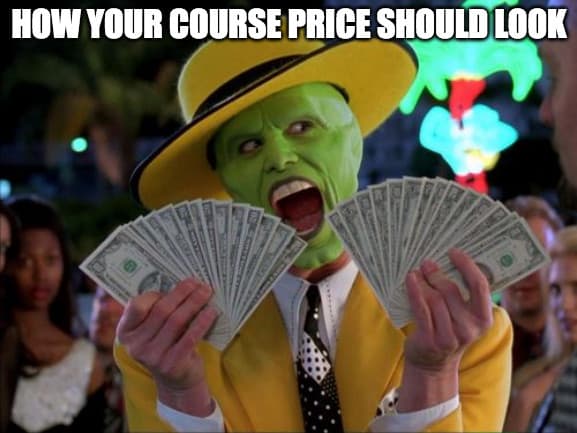
Potential customers are willing to pay a premium price for helpful courses – especially B2B courses that add clear, immediate value to their businesses.
Most new creators doubt their skills and don’t realize how valuable their course material or videos are. It’s the same as starting a new business or starting out as a freelancer, right? You don’t know your worth, so you charge a lower price.
Don’t do that. It might feel uncomfortable, but just stomp those thoughts into the dust. Whatever you think you should charge, add at least 50%.
Lesson 2 – Production Value Is NOT as Important as You Think It Is
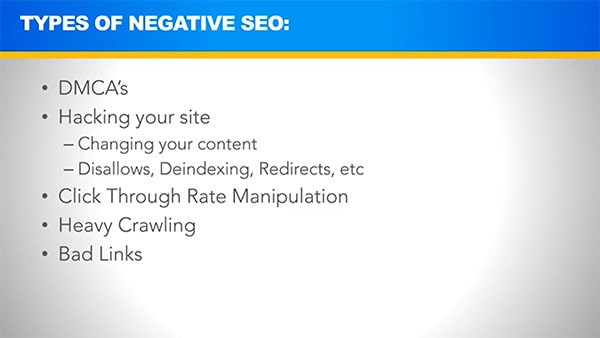
See this slide?
It’s not exactly winning any Academy Awards for special effects.
This course costs $1,000, by the way.
How about this one?
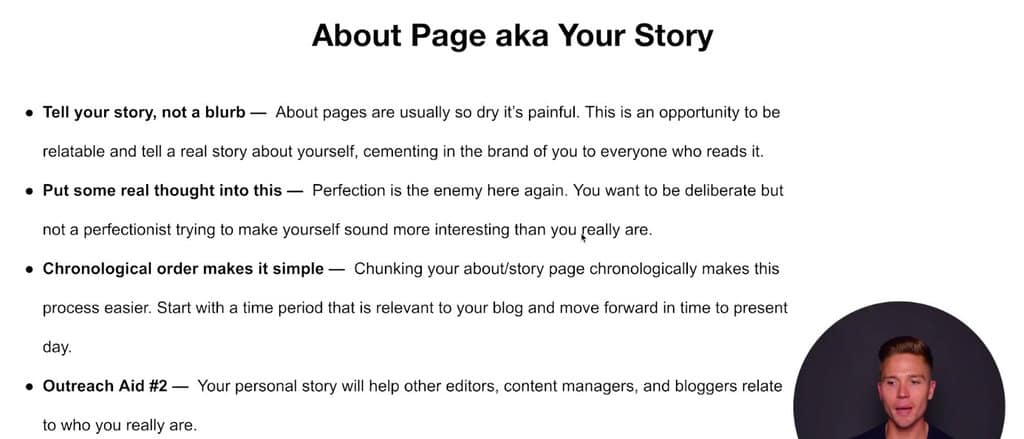
It’s $3,000+.
See what I’m getting at?
What matters is VALUE, not PRODUCTION QUALITY.
Is it nice to have a fancy course? Sure. Do you need one? No.
My advice is to not worry too much about it. Get a decent slide theme and a solid webcam, and use Camtasia to record your screen. If you want to just demo with your face in the corner, all you need is a decent lamp and a $100 webcam.
So how does this relate to pricing?
I’m just saying that you don’t need to have Hollywood production levels to justify high prices. That is a lie fabricated by the webcam illuminati in an attempt to get you to buy $1,000 cameras.
Lesson 3 – Implement Upsells NOW

Not tomorrow. Not the next day. Not when your Aunt May comes to visit from Greenbough, Alabama.
NOW.
Upsells are the closest thing to free money in the world. Not offering one in the beginning is still my single greatest regret in my career…at least when it comes to course creation.
An upsell is basically like an extra product or service a student can add on after they buy your course. In my case, it’s some extra templates or a consultation.
My average order is nearly 40% higher than it used to be, all because I installed ThriveCart and offered consultations as an upsell.
Factor this into your pricing as well. For example, if you have sales goals, expect upsells to account for around 20% of that. This gives you a lot more flexibility in setting your original price.
Lesson 4 – Charging Too Little Demotivates You – Don’t Do It!

There’s always nuance in everything. As you’ll see below, I do recommend pricing your course at a massive discount, in the beginning, to initially entice customers. But after that, playtime is over.
When you put a ton of work into your online course, you should make good money on every sale after marketing costs.
I hate the free course, mini-course, and low-ticket pricing models.
There’s a good argument for reducing prices IF you have a ton of upsells, multiple courses, or other products to offer and just want to get people into your system.
But in 90% of cases, you should not charge anything less than $200 for a good course. You’ll lose motivation.
Lesson 5 – Subscriptions Are the Greatest Thing Ever Invented (For an Online Course)
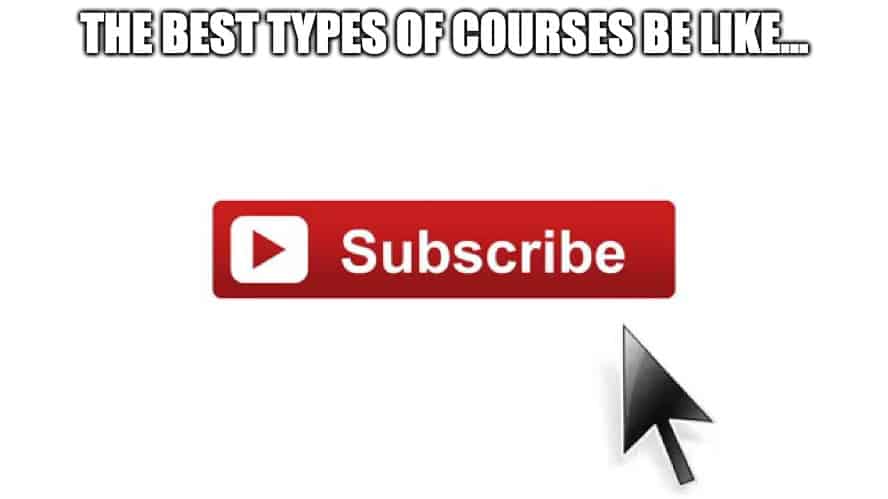
If I could start over again, I’d create subscription assets and be done with the one-time fee.
People very rarely cancel subscriptions. It’s just some weird evolutionary habit we’ve had since the dawn of time.
The majority of people I know are switching to the subscription model. It’s recurring passive income that rarely goes away. As I said, people just never cancel.
So, when thinking about your pricing, try to think “Should I charge one full price, or can I find a way to make this a subscription?”.
The best way to do this is by creating an online community.
For example, if you’re teaching a skill like playing guitar, you could create an online community for your students where people practice on Zoom together, show off new skills, run competitions, earn badges, and things like that.
It’s a win-win for both you and your students.
My 5-Step Online Course Pricing Process
As promised, here’s my exact process for pricing your online course based on my method.
Step 1 – Do Some Basic Industry Research to Create a Ballpark Online Course Price
Check Udemy, Skillshare, and other course sites, then do more granular research on Google to find “independent” course creators.
Take note of EACH of the following:
- Their online course price
- Their pricing strategy (e.g., upsells, tiers, pricing plans, etc.)
- Their positioning/branding (i.e., are they a perceived authority with social proof or are they a hack?)
- Your advantages/disadvantages compared to them
Once you figure out their pricing strategy, compare yourself to them (don’t worry, you’re perfect just the way you are). Do you have more expertise? More perceived value? Better marketing skills?
If this is your first online course, chances are you can’t compete with the big boys. That’s fine, just charge less and position yourself as a budget option. There’s a market for everything.
Step 2 – Calculate Your Course’s Impact on a Student’s Life or Business
This is perhaps the most important part of creating online courses, yet I never see anyone talking about it.
Sit down, set a 60-minute timer, turn on some random YouTube focus music, and open a Google Doc.
Start jotting down notes about who your students are, the transformation your course can bring, and how much that outcome could be worth to them.
This is why I love B2B online courses. Business owners have money, and online courses provide real, palpable benefits to their bottom line that they’re willing to pay a much larger price for.
Let me give you a good example.
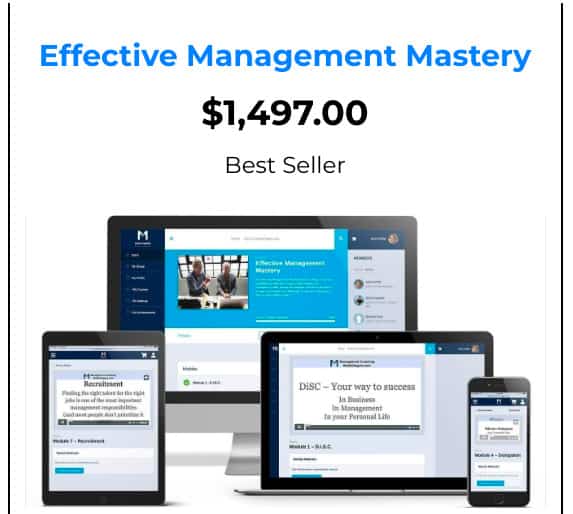
This management training course from Mads Singers is not very long, and the production value is kind of OK (sorry, Mads).
But you know what it does?
It changes a student’s business forever. Mads literally can point to any online business owner and say, “I’m going to show you exactly how I can cut your workload in half and 5x your business.” And it works. That’s why students are happy to pay $1,500.
You need to sit down and figure this part out yourself. Here’s what you need to know:
- Who?: Who are your students? What problem do they have? How much disposable income do they have?
- What?: What solution are you providing? What do they perceive the value to be? What guarantee can you give?
- How?: This is the deliverables of your online course. The videos, their production value, the downloadables, the accompanying community or coaching, etc.: all of these factors should be taken into account. The more the better.
Once you have all of these figured out, you’ll know if you can charge a higher-than-average price or if you should stay on the lower side.
Still with me? Cool. Once you set a baseline price based on your RELATIVE value, it’s time to start sciencing this dang thing.
Step 3 – Beta Test

Find a few qualified people from your target audience, let them take the course, then ask them open-ended questions about what they perceive the value to be. Remember, you’ve got your online course price in your head already.
Don’t ask “Would you pay $500” for this?” Instead, ask “What do you think a fair price for this would be?” or something similar.
While beta testing, take note of the following:
- Are students excited?
- Do they talk about how much value there is in the course?
- Do they talk about how the course could transform their business or life?
- Which lessons provided the most value or which tips did they rave about?
- How long did it take for them to think of a ballpark price they’d be willing to pay?
The more students are excited and talk about all the value they got from your course, the more likely it is you’ve got a higher-priced course on your hands.
The answers to these questions will determine if you can charge a higher price point or if, during the course launch, you’ll have to start small and build from there.
Step 4 – Launch Your Online Course at a Discount
Most course creators get the launch process all wrong. They jump right into running ads to their garbage sales page, blow their entire budget in a few months, then claim that courses are dead and everyone just wants to pay a low price point.
Don’t be one of these people.
Here’s what to do instead, so you can succeed with a premium price tag.
Once you’ve got a rough idea of what your course is worth, launch your course at a massive discount.
I’m talking about a “damn, I’m kind of uncomfortable with how cheap this is right now” low-priced course offer.
Everyone I know with an online course does it this way.
Lowering the price at launch accomplishes a few key goals:
- You actually make some sales: Money is nice. You’ll at least be able to pay for your online course platform without going into debt.
- You get happy students and great testimonials: It might be hard to drive sales in the beginning if you don’t have a name for yourself. With a lower price, you can attract more students and start building a solid base of testimonials, which also increases your perceived value.
- You get valuable feedback/launch juice: If you’re running a community, Facebook group, or another service along with your course, more students means more launch juice. Launch juice is just my weird term for getting up and running. Nobody wants to participate in an empty group/community. More students also mean more feedback you can use to improve your course (and charge higher price points in the future).
Step 5 – Steadily Raise Prices Over Time
More customers are happier paying premium pricing than you could ever imagine. Some potential students might even want to pay MORE just because they like the feeling of getting something expensive.
The best price to charge is the highest one people are willing to pay. I have one friend who runs a large affiliate SEO course who told me his conversion rates INCREASED after increasing prices.
Consider raising prices at least once per year, and TELL potential students prices will go up soon to entice them to buy immediately.
What to Do Next…
Now that you know how to price your online course, the next step is learning how to sell an online course.
The majority of creators fail because they think selling courses is as easy as signing up for Udemy or running some Facebook ads.
It’s not.
You don’t want to end up having to torch your entire marketing plan after 6 months like I did. Check out our guide on selling online courses to avoid that same fate.
Online Course Pricing F.A.Q.
Q: How do you determine a course price?
A: You determine a course price by first understanding how much disposable income your market has as well as the value of the solution you’re providing for them. Then, you need to search the market and see what other courses are selling for. Once you see what the competition is doing, analyze your advantages or disadvantages over them and price accordingly.
Q: How much should I charge for an online course?
A: You should charge anywhere from $50 to $1,000 or more depending on how valuable your course is to your target market. According to Kajabi, the average online course sells for about $170. We recommend never going lower than $100. Cohort based courses and flaship courses tend to charge a premium.




